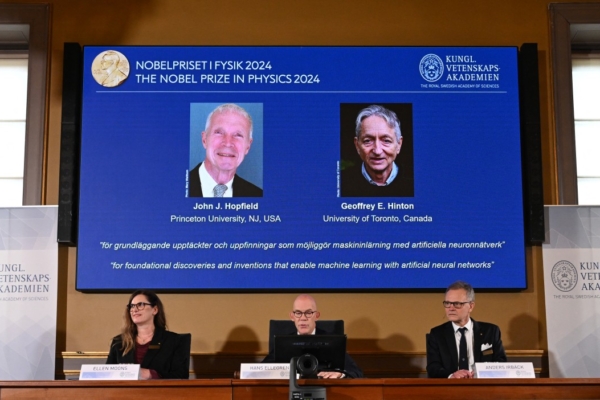The highly anticipated Nobel Prize in Physics was announced on Tuesday, October 8th, with American scientist John Hopfield and British-Canadian scientist Geoffrey Hinton sharing the honor. Their discoveries and inventions have laid the foundation for machine learning.
According to the Nobel Committee, “By utilizing fundamental concepts and methods of physics, they developed techniques using network structures to process information.”
Ellen Moons, the chairperson of the Nobel Physics Prize Committee, stated that the laureates’ discoveries have formed the cornerstone of machine learning, enabling faster and more reliable decision-making, such as in diagnosing medical conditions.
Canadian scientist Hinton, who won the award, left his position at Google last year to be able to openly discuss the potential risks of the technology he pioneered.
Speaking over the phone from a hotel in California during the Nobel Prize announcement, Hinton expressed his belief that this technology is poised to revolutionize fields such as healthcare, leading to a significant boost in productivity.
However, he also cautioned, “We must also be cautious about potential negative consequences, especially the threat of these things spiraling out of control.”
Born in the UK, 76-year-old Hinton is now an honorary professor at the University of Toronto in Canada. He invented a method that autonomously identifies attributes in data and performs tasks like recognizing specific elements in images.
After realizing that computers could potentially become more intelligent than humans, Hinton left Google in 2023. He mentioned that Google as a company acted responsibly, but he harbored regrets about some of his research endeavors, done with the information available at the time. During the Nobel Prize announcement, he expressed concerns about the possibility of systems smarter than us ultimately gaining control.
76-year-old Princeton University honorary professor Hopfield created associative memory, a means to store and reconstruct images and other types of patterns within data.
“This year’s two recipients of the Nobel Physics Prize have developed methods using tools from physics that form the foundation of modern powerful machine learning,” the awarding institution stated in a press release.
The prize money amounts to 11 million Swedish Krona (roughly 1.1 million USD), to be shared by the two winners.
When asked about concerns regarding machine learning and other forms of artificial intelligence, Nobel Physics Prize Committee Chairperson Moons said, “Machine learning offers enormous benefits, but its rapid advancement has also raised concerns about the future.”
“Humanity has a collective responsibility to utilize this new technology in a safe and ethical manner for the maximum benefit of humankind,” she added.
Aside from the sometimes controversial Nobel Peace Prize and Literature Prize, the Physics Prize often garners the most attention within the Nobel awards. Past winners include scientific luminaries like Albert Einstein, Niels Bohr, and Enrico Fermi.
(Information sourced from Reuters and CNN reports.)

